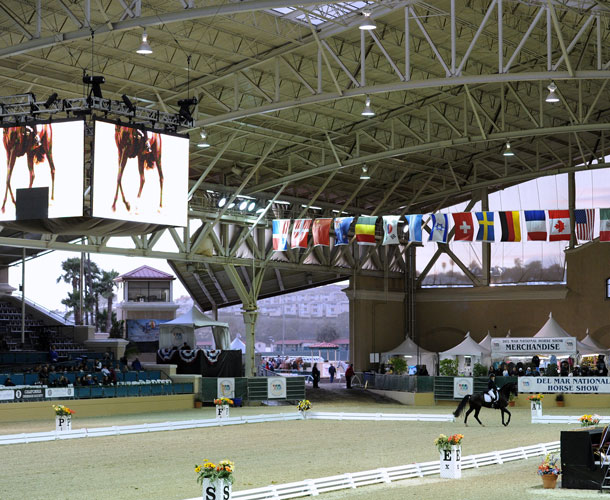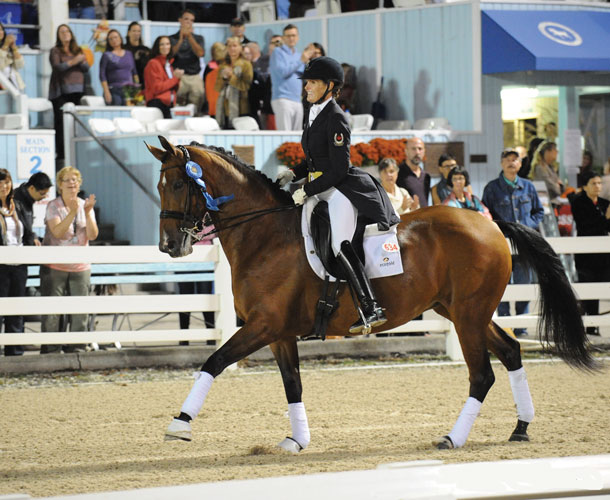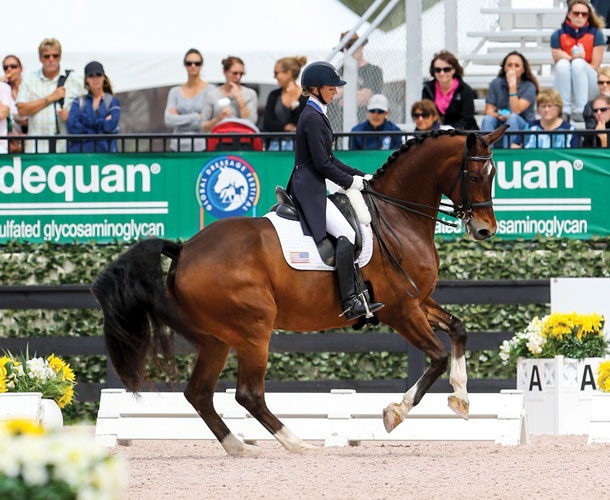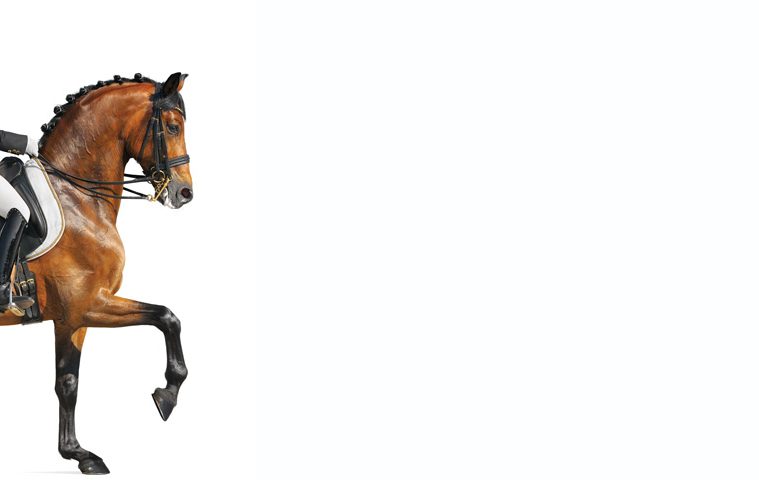The Ultimate Harmony Between Horse and Rider
The quiet elegance and beauty of dressage, with its pirouettes and piaffes (a cadenced trot in place), is one of the most breathtaking sights in today’s Olympic competitions. Who would ever have thought that the calm and beautiful sport was originally developed to give mounted soldiers an advantage in battle?
In fact, the word dressage—a French term meaning “training”—was used to increase the maneuverability and obedience of cavalry horses, with some of the movements being taught specifically as battle techniques.
Today, fine dressage demonstrates the ultimate in harmony between horse and rider. It is one of the three equestrian Olympic disciplines: dressage, eventing, and jumping. Dressage is also one portion of a three-part event competition, combined with jumping and cross-country.
As with many sports including figure skating and even equitation, it takes knowledge to appreciate a dressage performance to the fullest. Here’s a primer.
The Arena
Most equestrians know a dressage arena by the white letters that mark points on its borders, but few outside the dressage world know the letters’ meaning or use. Actually, even among experts it isn’t certain where the letters originated. One theory is that in the old imperial German court, the walls of the stable yard were marked with letters indicating where each rider’s horse was to stand while awaiting its rider. The yard may also have been used for schooling, training, and exercising horses, evolving to the current use of the letters in the dressage arena.

A typical arena is either 20 meters by 40 meters (approximately 65 by 131 feet) or 20 by 60 meters (approximately 65 by 197 feet).
Formal Elegance
Part of the beauty of dressage is the formality. Riders, like their horses, are dressed formally. In competition, they wear white or cream breeches, white shirt, and stock tie with a small pin. Gloves are typically white. The coat is usually solid black with metal buttons, although solid navy blue is sometimes worn. In some classes, the riders wear a tailed jacket (shadbelly) with a yellow vest or vest points instead of a plain dressage coat.
Riders usually wear tall dress boots, and at the upper levels a top hat that matches the rider’s coat is traditional, although helmets are increasing in popularity.

At Fédération Equestre International (FEI) competitions, members of the military, police, national studs, national schools, and national institutes retain the right to wear their service dress.
The Competition
Dressage tests are divided by graduated levels, from the most basic walk/trot to the grand prix test.
Currently, there are nine progressive levels of competition where the horse and rider perform compulsory exercises. Other classes, such as musical freestyle, offer creativity and individual expression for exhibitors and have become spectator favorites. Competitive dressage is open to any breed of horse and all levels of riders.

At the international level, dressage tests governed by the FEI are Prix St. Georges, Intermédiare I, Intermédiare II, and Grand Prix. The tests performed at the Olympics are Grand Prix. This highest level of test demands the most skill and concentration from both horse and rider.
The Movements
The U.S. Dressage Federation explains that each horse competes individually at each level. Each level has several tests that involve variations of patterns of the same movements. Movements for each level are prerequisites for the next level. For example, if a horse cannot perform a 20-meter trot circle, as required in training level, it should not be ridden on a 10-meter circle, which is smaller and more difficult and which is required at the second level.
Every test has an associated score sheet in which the judge assigns a score and often a comment for the movement performed. There are also marks (called collective marks) given at the end of each test:
Gaits. A sound dressage horse has only three correct rhythms—a four-beat walk, a two-beat trot, and a three-beat canter.
Impulsion. Desire to move forward, elasticity of the steps, suppleness of the back, engagement of the hindquarters.
Submission. The horse’s attention and confidence, lightness and ease of movements, acceptance of the bridle, lightness of the forehand, and straightness.
Rider’s seat and position. The horse’s movement is controlled by the rider’s seat which is the most influential and “unseen” aid.
Rider’s correct and effective use of aids. The less you see the rider do, the better. That means he/she is communicating with the horse quietly, and the horse is attentive.
Harmony between horse and rider. Each movement is scored on a scale of 0 (not performed) to 10 (excellent). Total points for the test are added up and noted as a percentage of the total possible number of points for that test. A percentage of 65% or higher is generally thought to mean the horse is ready to move up a level.
While the intricacies and technical aspects of dressage may seem intimidating, it is a sport that can be enjoyed by all levels of equestrians—both as viewers and as participants.
An audience favorite is the freestyle, where riders and horses perform specially choreographed patterns to music. But every event will amaze. You can find a listing of events near you at usdf.org/calendar/competitions
Sources: The U.S. Dressage Federation (USDF), Fédération Equestre Internationale (FEI), United States Equestrian Federation (USEF)

